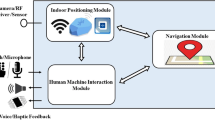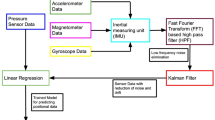Abstract
Location information is one of the most important factors for many location-based services (LBSs) in the Internet of Things (IoT). Device-free localization (DFL) has received more attention as it achieves localization without attaching any electronic device to the target. DFL can be applied to many special scenarios, such as monitoring the elderly living alone, health care of inpatients, and emergency rescue. In applications based on traditional localization methods, the numerous receive signal strength (RSS) measurements are collected from wireless sensor networks (WSNs) comprised of sensor pairs to construct the atoms of learning dictionaries. With recovery algorithms, solutions can be obtained from undetermined equations using learning dictionaries, which can be mapped to the position index of the target to estimate the accurate coordinates. However, the numerous RSS data produced by WSN sensor generate high-dimensional learning dictionaries that cost the sparse recovery algorithm more iterative computation time to derive the target location and more space for data storage, thus affecting the real-time DFL performance. In this paper, we propose a data dimension reduction method based on the generalized iterative thresholding algorithm for DFL. Firstly, we reduced the column and row dimensions of the dictionary, respectively, via principal components analysis (PCA). Then, the dimension of the observed vector was reduced correspondingly. Finally, the new underdetermined equation was solved via sparse coding with an iterative p-thresholding algorithm in signal subspace, and the target location was estimated accurately. Experiments on public datasets demonstrated that the proposed method outperforms the current alternatives by improving the computation efficiency of DFL systems and taking less time to locate the target, implying its good applicability to IoT scenarios with high real-time requirements.










Similar content being viewed by others
Data Availability
The authors declare that all data generated or analysed during this study are included in this article.
References
Pahlavan K, Krishnamurthy P, Geng Y (2015) Localization challenges for the emergence of the smart world. IEEE Access 3:3058–3067. https://doi.org/10.1109/ACCESS.2015.2508648
Youssef M, Mah M, Agrawala A (2007) Challenges: device-free passive localization for wireless environments. In: Proceedings of the 13th annual ACM international conference on mobile computing and networking, pp 222–229
Zhang D, Ma J, Chen Q, Ni L M (2007) An rf-based system for tracking transceiver-free objects. In: Fifth annual IEEE international conference on pervasive computing and communications (PerCom’07), pp 135–144. IEEE
Wilson J, Patwari N, Vasquez F G (2009) Regularization methods for radio tomographic imaging. In: 2009 Virginia tech symposium on wireless personal communications
Zhao L, Huang H, Li X, Ding S (2019) An accurate and robust approach of device-free localization with convolutional autoencoder. IEEE Internet of Things Journal 6 (3):5825–5840. https://doi.org/10.1109/JIOT.2019.2907580
Zhao L, Su C, Huang H, Han Z, Ding S, Li X (2019) Intrusion detection based on device-free localization in the era of iot. Symmetry 11(5):630. https://doi.org/10.3390/SYM11050630
Zhang Z, Xu Y, Yang J, Li X, Zhang D (2015) A survey of sparse representation: algorithms and applications. IEEE Access 3:490–530. https://doi.org/10.1109/ACCESS.2015.2430359
Wang D S, Guo X S, Zou Y X (2016) Accurate and robust device-free localization approach via sparse representation in presence of noise and outliers. In: 2016 IEEE International conference on digital signal processing (DSP), pp 199–203
Li X, Ding S, Li Z, Tan B (2017) Device-free localization via dictionary learning with difference of convex programming. IEEE Sensors J 17(17):5599–5608. https://doi.org/10.1109/JSEN.2017.2730226
Liu T, Luo X, Liang Z (2018) Enhanced sparse representation-based device-free localization with radio tomography networks. J Sens Actuator Netw 7(1):7. https://doi.org/10.3390/jsan7010007
Huang H, Zhao H, Li X, Ding S, Zhao L, Li Z (2018) An accurate and efficient device-free localization approach based on sparse coding in subspace. IEEE Access 6:61782–61799. https://doi.org/10.1109/ACCESS.2018.2876034
Huang H, Han Z, Ding S, Su C, Zhao L (2019) Improved sparse coding algorithm with device-free localization technique for intrusion detection and monitoring. Symmetry 11:637. https://doi.org/10.3390/SYM11050637
Tropp J A, Gilbert A C (2007) Signal recovery from random measurements via orthogonal matching pursuit. IEEE Trans Inform Theory 53(12):4655–4666. https://doi.org/10.1109/TIT.2007.909108
J. C E (2006) Compressive sampling. In: Proceedings of the international congress of mathematicians, vol 3, pp 1433–1452
Daubechies I, Defrise M, De Mol C (2004) An iterative thresholding algorithm for linear inverse problems with a sparsity constraint. Commun Pur Appl Math 57(11):1413–1457. https://doi.org/10.1002/CPA.20042
Beck A, Teboulle M (2009) A fast iterative shrinkage-thresholding algorithm for linear inverse problems. SIAM J Imag Sci 2:183–202. https://doi.org/10.1137/080716542
Selesnick I W (2009) Sparse signal restoration. Connexions, 1–13
Huang H, Zhang C, Wu H, Dai Z, Zhao L, Su C (2021) An improving sparse coding algorithm for wireless passive target positioning. Phys Commun 49:1–9. https://doi.org/10.1016/j.phycom.2021.101487
Han Z, Su C, Ding S, Huang H, Zhao L (2019) Device-free localization via sparse coding with log-regularizer. In: 2019 IEEE 10th international conference on awareness science and technology (iCAST), pp 1–6
Zhao L, Huang H, Su C, Ding S, Huang H, Tan Z, Li Z (2021) Block-sparse coding-based machine learning approach for dependable device-free localization in iot environment. IEEE Internet Things J 8:3211–3223. https://doi.org/10.1109/JIOT.2020.3019732
Woodworth J, Chartrand R (2016) Compressed sensing recovery via nonconvex shrinkage penalties. Inverse Probl 32(7):075004. https://doi.org/10.1088/0266-5611/32/7/075004
Chartrand R (2009) Fast algorithms for nonconvex compressive sensing: Mri reconstruction from very few data. In: 2009 IEEE international symposium on biomedical imaging: from nano to macro, pp 262–265
Chartrand R (2007) Exact reconstruction of sparse signals via nonconvex minimization. IEEE Signal Process Lett 14(10):707–710. https://doi.org/10.1109/LSP.2007.898300
Chartrand R, Staneva V (2008) Restricted isometry properties and nonconvex compressive sensing. Inverse Probl 24:035020. https://doi.org/10.1088/0266-5611/24/3/035020
Voronin S, Chartrand R (2013) A new generalized thresholding algorithm for inverse problems with sparsity constraints. In: 2013 IEEE international conference on acoustics, speech and signal processing, pp 1636–1640
Cheng Q, Zhang L, Xue B, Shu F, Yu Y (2021) Device-free localization via sparse coding with a generalized thresholding algorithm. IEICE Trans Commun E105-B:1. https://doi.org/10.1587/transcom.2021ebp3048
Wilson J, Patwari N (2010) Radio tomographic imaging with wireless networks. IEEE Trans Mob Comput 9(5):621–632. https://doi.org/10.1109/TMC.2009.174
Jolliffe I (2002) Principal component analysis. Springer, New York
Liu J, An H, MT P M, Cui Z, Zhao S (2017) Redundancy reduction for indoor device-free localization. Pers Ubiquit Comput 21(1):5–15. https://doi.org/10.1007/s00779-016-0979-8
Li X, Ding S, Li Y (2017) Outlier suppression via non-convex robust pca for efficient localization in wireless sensor networks. IEEE Sensors J 17(21):7053–7063. https://doi.org/10.1109/JSEN.2017.2754502
Wang J, Zhang X, Gao Q, Ma X, Feng X, Wang H (2016) Device-free simultaneous wireless localization and activity recognition with wavelet feature. IEEE Trans Veh Technol 66(2):1659–1669. https://doi.org/10.1109/TVT.2016.2555986
Shi S, Sigg S, Chen L, Ji Y (2018) Accurate location tracking from csi-based passive device-free probabilistic fingerprinting. IEEE Trans Veh Technol 67(6):5217–5230. https://doi.org/10.1109/TVT.2018.2810307
Wright J, Yang A Y, Ganesh A, Sastry S S, Ma Y (2008) Robust face recognition via sparse representation. IEEE Trans Pattern Anal Mach Intell 31(2):210–227. https://doi.org/10.1109/TPAMI.2008.79
Cevher V, Duarte M F, Baraniuk R G (2008) Distributed target localization via spatial sparsity. In: 2008 16th European signal processing conference, pp 1–5
Acknowledgments
This work is supported in part by the National Natural Science Foundation of China under Grant 61771258, the Postgraduate Research and Practice Innovation Program of Jiangsu Province under Grants KYCX20_0732, KYCX21_0749, and KYCX20_0739, and the Open Research Fund of Key Lab of Broadband Wireless Communication and Sensor Network Technology (Nanjing University of Posts and Telecommunications), Ministry of Education.
Author information
Authors and Affiliations
Corresponding author
Ethics declarations
Competing interests
There are no competing interests to declare.
Additional information
Publisher’s note
Springer Nature remains neutral with regard to jurisdictional claims in published maps and institutional affiliations.
Rights and permissions
About this article
Cite this article
Cheng, Q., Zhang, L., Xue, B. et al. A generalized thresholding algorithm with dimension reduction for device-free localization in IoT. Appl Intell 53, 9089–9102 (2023). https://doi.org/10.1007/s10489-022-03925-2
Accepted:
Published:
Issue Date:
DOI: https://doi.org/10.1007/s10489-022-03925-2




